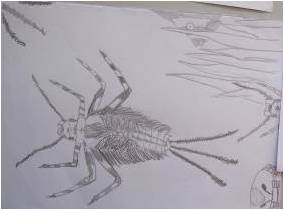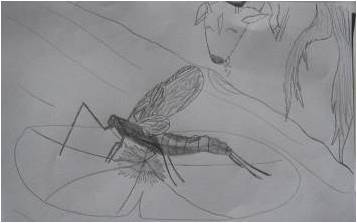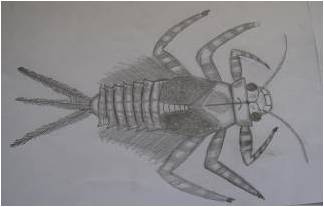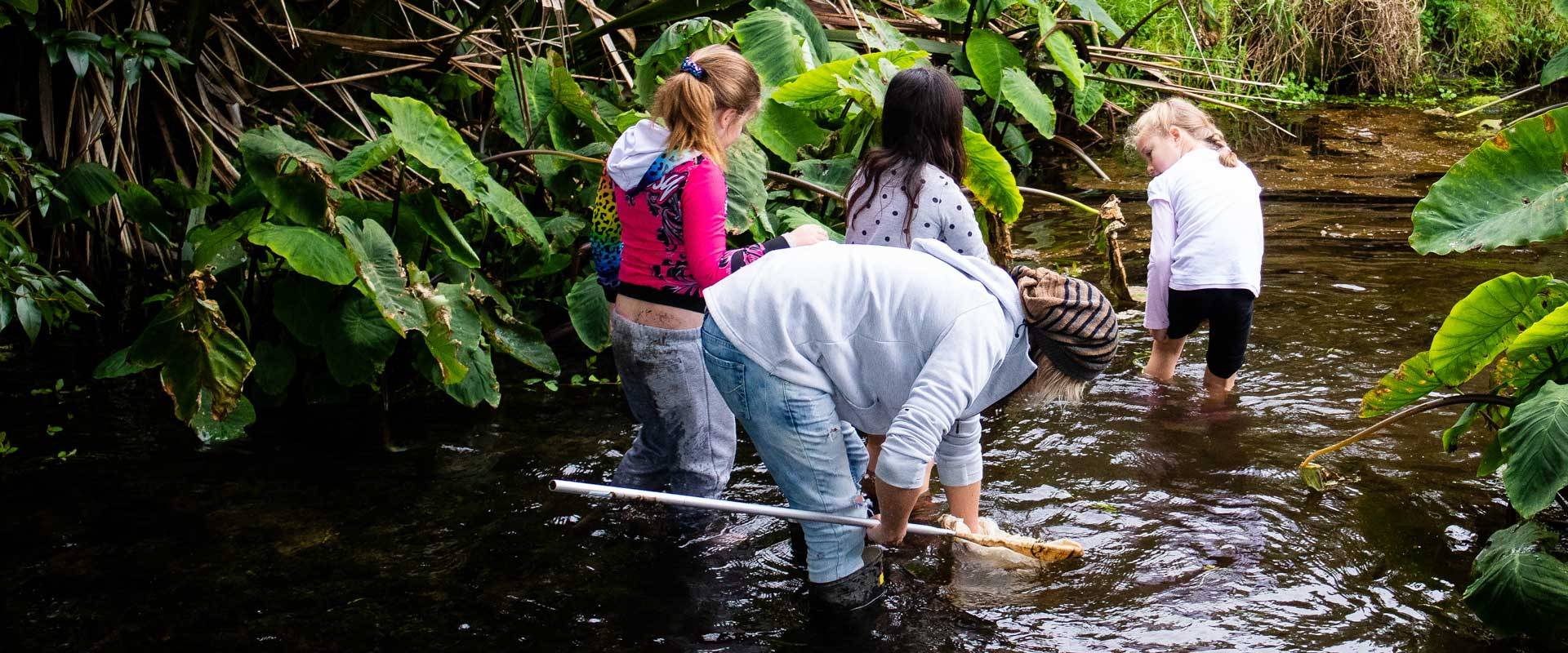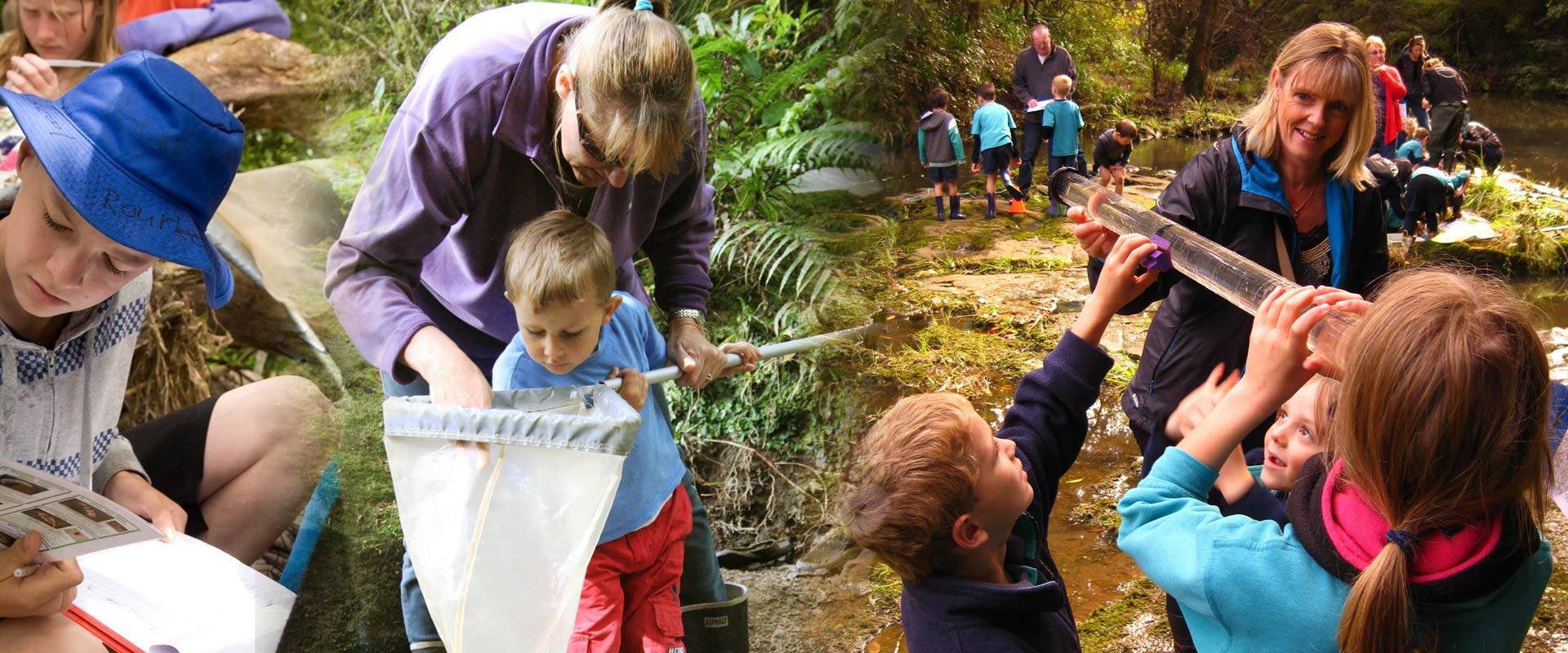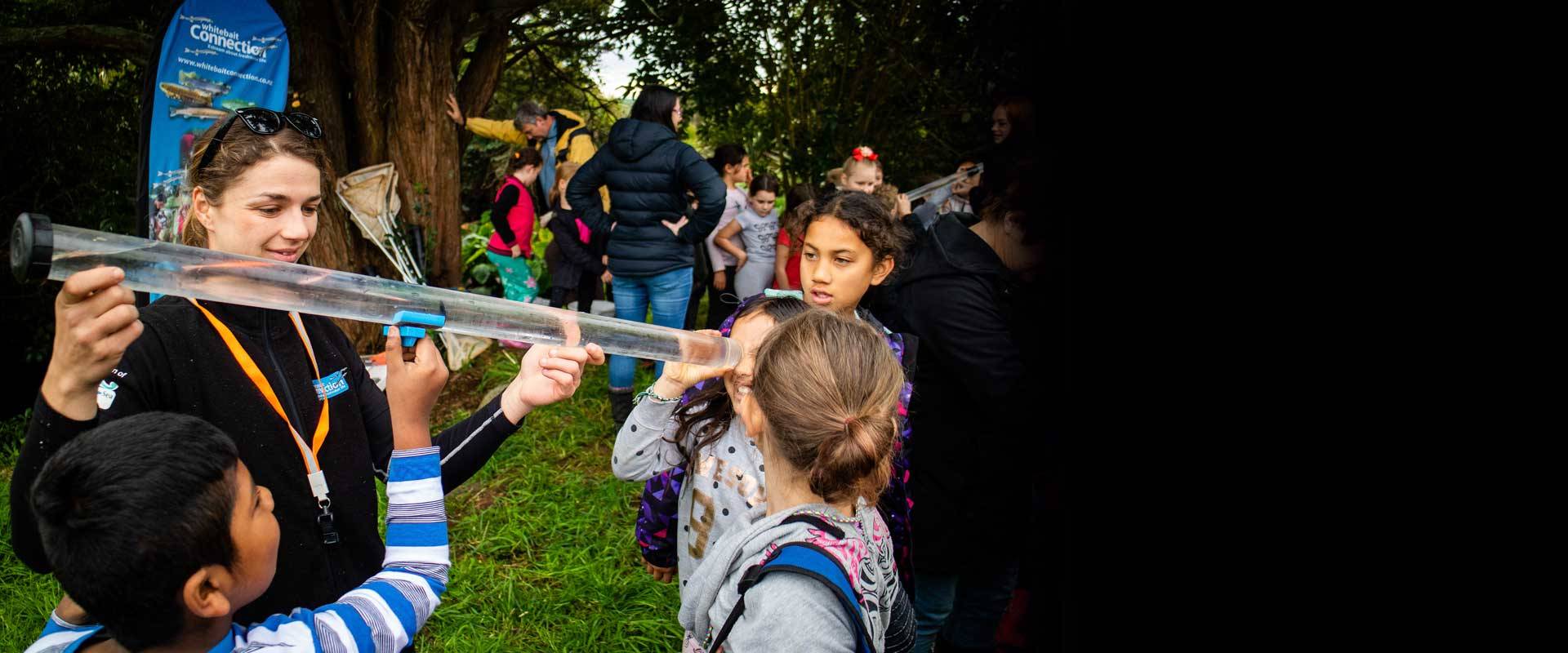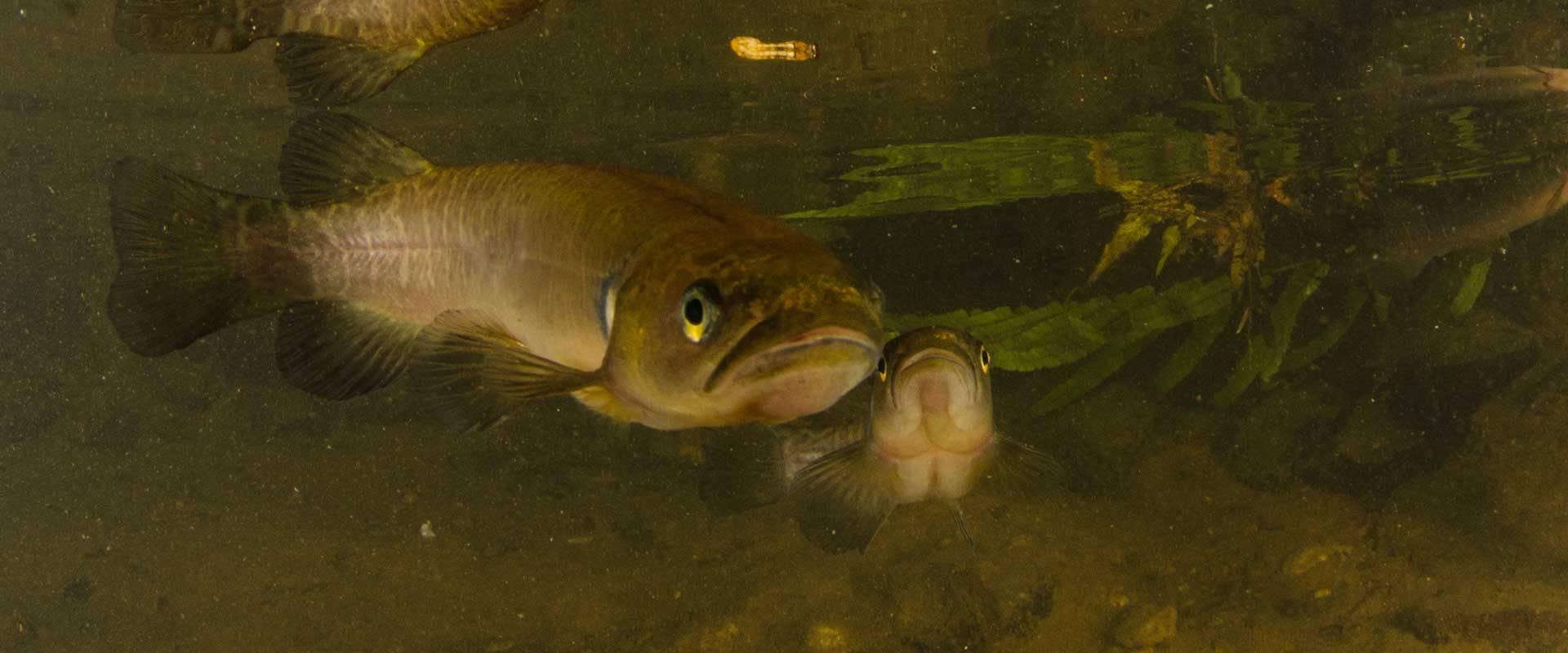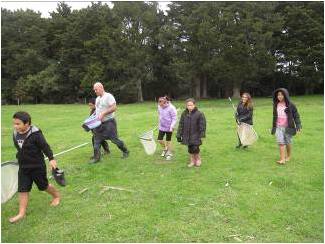 50 students from 3 Kaikohe Christian School classes took part in the WBC programme in Term two, 2013 with coordinator Soozee McIntyre, thanks to ASB funding - one a combined year 1-2 class, a combined year 3-4 class and the other a combined year 5-6 class.
50 students from 3 Kaikohe Christian School classes took part in the WBC programme in Term two, 2013 with coordinator Soozee McIntyre, thanks to ASB funding - one a combined year 1-2 class, a combined year 3-4 class and the other a combined year 5-6 class.
The school had not done any previous study of fresh water biodiversity.
 Various sites on the Northland College farm have been visited as part of WBC studies during the past 2 years and we are starting to build up a picture of the state of the waterways and establish some data sets to make comparisons both between sites and over time. For this investigation we chose a small stream (not much more than a farm drain) which had been investigated in 2012 by Kaikohe East School, and a new site on the Taikawhena Stream. This is stream that drains from the direction of Ngawha and joins the Wairoro Stream – the main stream skirting the 3 schools.
Various sites on the Northland College farm have been visited as part of WBC studies during the past 2 years and we are starting to build up a picture of the state of the waterways and establish some data sets to make comparisons both between sites and over time. For this investigation we chose a small stream (not much more than a farm drain) which had been investigated in 2012 by Kaikohe East School, and a new site on the Taikawhena Stream. This is stream that drains from the direction of Ngawha and joins the Wairoro Stream – the main stream skirting the 3 schools.  The Taikawhena site is in a stand of old totara trees and has been grazed in the past but is only occasionally grazed now. The College farm is a well-managed dairy unit with some riparian fencing and planting being undertaken as time and resources allow (with involvement of the college students). The Taikawhena site is well-shaded by the totara and has clear water and a gravelly streambed.
The Taikawhena site is in a stand of old totara trees and has been grazed in the past but is only occasionally grazed now. The College farm is a well-managed dairy unit with some riparian fencing and planting being undertaken as time and resources allow (with involvement of the college students). The Taikawhena site is well-shaded by the totara and has clear water and a gravelly streambed.
Download the field trip photo story including the results here (pdf 7.8mb)
As a freshwater ecosystem within a well-managed dairy farm, the investigation site gave the students an experience of the biodiversity values that can be observed in farmland in a catchment that has impacts from multiple landuses, from bush through urban/residential and various farming uses. Aim of the investigation was to gain an understanding of what constitutes a healthy stream and prompt further enquiry into how that stream health can be maintained throughout the catchment which ultimately reaches the Hokianga Harbour.
 The school's objective in visiting the Taikawhena Stream was to discover the biodiversity within it, gain an understanding of the threats to stream health and challenge the students to plan an action on their own school grounds that supports the catchment health as a whole.
The school's objective in visiting the Taikawhena Stream was to discover the biodiversity within it, gain an understanding of the threats to stream health and challenge the students to plan an action on their own school grounds that supports the catchment health as a whole.
 All the classes used the WBC glossary game exercise to build vocabulary around freshwater biodiversity concepts, reinforcing that learning with artwork and discussion. The older children (year 5 – 6) extended this with learning about the inter-relationships of the species and their place in the food chain. They were also very interested to discuss pathways to learning more fresh water science, drawing conclusions about the learning style that starts with a deep interest in the natural world – which many could relate to.
All the classes used the WBC glossary game exercise to build vocabulary around freshwater biodiversity concepts, reinforcing that learning with artwork and discussion. The older children (year 5 – 6) extended this with learning about the inter-relationships of the species and their place in the food chain. They were also very interested to discuss pathways to learning more fresh water science, drawing conclusions about the learning style that starts with a deep interest in the natural world – which many could relate to.
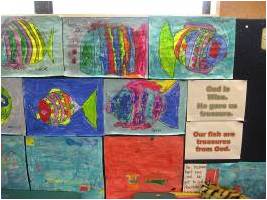 A connection has been established with Northland College and, particularly, with the farm teacher at the college, Eric Alexander. When the Takawhena stream paddock is fenced to exclude the cows, Eric will be in touch with KCS about riparian and understory planting in this very pretty area. Meanwhile, Eric has offered the KCS some rare hebe plants that the college students have propagated as part of the Enviroschools ‘save a species’ programme. The KCS teachers are consulting with their school caretaker about a suitable place to plant these on their own school grounds, near the Wairoro Stream. The small hebe plantation will help conserve this threatened species and will provide ‘mother plants’ for further propagation – an activity that fits well with their learning plans for term 3 which focus on plants and their growth, care and uses.
A connection has been established with Northland College and, particularly, with the farm teacher at the college, Eric Alexander. When the Takawhena stream paddock is fenced to exclude the cows, Eric will be in touch with KCS about riparian and understory planting in this very pretty area. Meanwhile, Eric has offered the KCS some rare hebe plants that the college students have propagated as part of the Enviroschools ‘save a species’ programme. The KCS teachers are consulting with their school caretaker about a suitable place to plant these on their own school grounds, near the Wairoro Stream. The small hebe plantation will help conserve this threatened species and will provide ‘mother plants’ for further propagation – an activity that fits well with their learning plans for term 3 which focus on plants and their growth, care and uses.
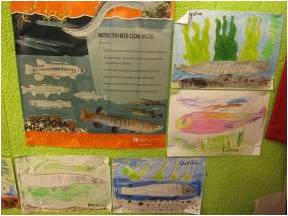 The following email was received from the principal at Kaikohe Christian School:
The following email was received from the principal at Kaikohe Christian School:
Hi Soozee
Even though I wasn’t present at your lessons and field trips, I would like to say thank you for your time, effort and enthusiasm. I have had nothing but positive feedback from staff and students. Well done!
- Graeme Burgess, Acting Principal
All of the teachers involved commented that they had learned new information about the freshwater environment and a number of the critters that inhabit it. They are keen to integrate this learning with further planned study of the natural world and continue to make ‘connections’ about the environment and interactions within the catchment.
Check out this great Year 5 and 6 artwork!
